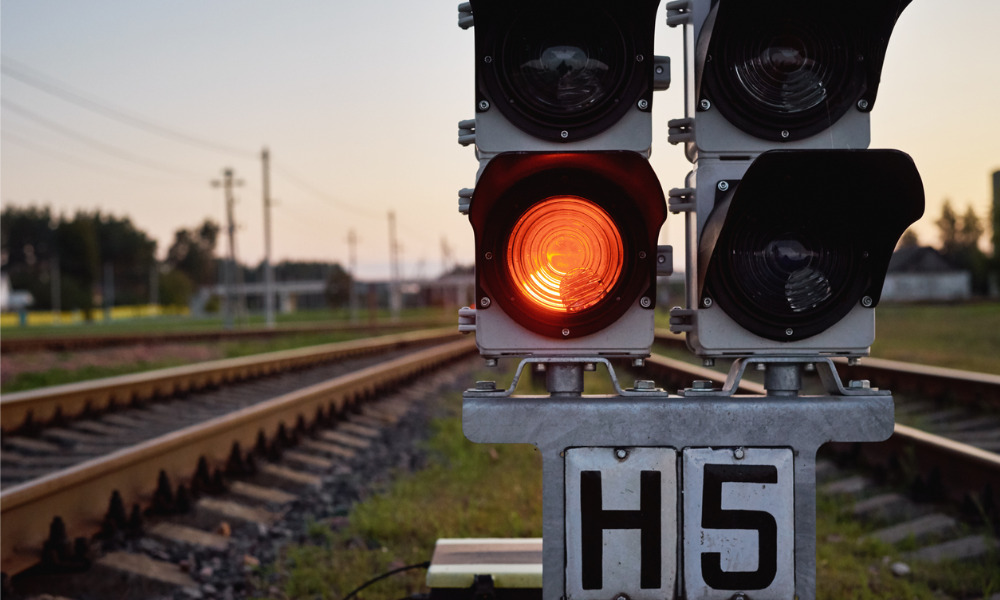Marks launch of Rail Safety Week 2020

The federal government is investing $25 million over three years through Transport Canada for the Rail Safety Improvement Program.
This investment will support 165 new projects and initiatives that will increase safety and Canadian’s confidence at grade crossings and along rail lines, according to the government.
“Rail safety remains my top priority, even as we continue to face the challenges of COVID-19,” said Marc Garneau, minister of transport. “Over the years, our government’s renewed commitment to rail safety demonstrates our dedication to supporting projects that keep Canadians safe, stimulate the economy, and ensure that our rail network remains one of the most efficient and secure rail transportation systems in the world.”
The funding will be distributed to 161 new projects that focus on infrastructure, technology and research, including safety improvements on rail property; the use of innovative technologies; research and studies; as well as the closures of grade crossings that present safety concern; and four rail safety education and awareness initiatives that focus on reducing injuries and fatalities in communities across Canada.
The program is an essential component of the federal government’s commitment to improving rail safety and preventing serious incidents. In the past four years, $85 million have been invested in the form of grants and contributions, said the government.
Grade crossing and trespassing accidents still cause the most rail-related deaths and serious injuries in Canada, said the government.
Transport Canada is taking action to implement recommendations from the 2018 Railway Safety Act Review report, including improving grade crossing safety and safer interactions of people and trains. The investment complements efforts to bring together a broader range of partners to work with to find ways to reduce largely preventable deaths and injuries at grade crossings due to trespassing, according to the government.
This year, Transport Canada is funding four public education and awareness activities, 146 grade-crossing improvements including crossing infrastructure projects, 12 grade-crossing closures and three technology and research projects across the country.
Rail safety week
On Friday, Garneau also announced the launch of Rail Safety Week 2020, which runs until Sept. 27.
Transport Canada is joining forces with Operation Lifesaver again this year to help #STOPTrackTragedies and increase awareness about the dangers surrounding rail property and trains.
“Transport Canada and railway industry employees work to make our rail transportation system safer for all and I am proud of the accomplishments this year in the fields of research and consultations, and how we are moving forward with several rail safety improvement projects,” said Garneau. “This week reminds us that we must all be vigilant of our surroundings and remember that trespassing on railway tracks is not only illegal, but could be fatal.”
For the week, the government is reminding Canadians about some key tips to keep everyone safe around tracks, and encourages everyone to share rail safety tips online:
- Tampering with rail lines, rail cars or signaling systems is both illegal and extremely dangerous—it could cost lives!
- Always expect a train at a crossing; stop, look both ways and listen. Never stop on tracks.
- If you notice that a crossing light isn’t working or if you see something unsafe around tracks, it’s important to report it immediately.
- Never drive around lowered gates—it's illegal and potentially deadly.
- Respect private property. Although railway tracks may be a shortcut to your destination, trespassing on the railway’s private property is unlawful and unsafe.
- Obey all warning signs and signals. Look for traffic signs that indicate a roadway/railway crossing. Some busier crossings also have lights and bells or gates.
Transport Canada also highlighted several actions it has done for safety this year, including:
- leading a broader rail security Task Force with participants from railway police organizations and law enforcement partners to reduce the risks to railway security, while also helping to educate and shape behaviour around the effects of tampering with Canada’s railway system;
- working with the Canadian Crime Stoppers Association to improve the security of Canada’s railway system and infrastructure;
- publishing Locomotive Voice and Video Recorder Regulations, which was the result of extensive research and consultations for the use of this type of technology to help investigators know the sequence of events leading up to a rail accident and taking any required corrective measures;
- issuing ministerial orders to strengthen regulatory requirements which will reduce the risk of train derailments by targeting speed restrictions for trains carrying dangerous goods and revising rules governing track safety.
Recently, Transport Canada released the 2020 edition of its Emergency Response Guidebook, which is designed for dangerous goods incidents on a highway or rail line.
In June, the Transportation Safety Board of Canada (TSB) recommended that Transport Canada, railway companies and their labour representatives work together to reduce the number of uncontrolled movements in rail yards, specifically those caused by rail cars being moved without using air brakes – a routine task known as “switching without air.”





